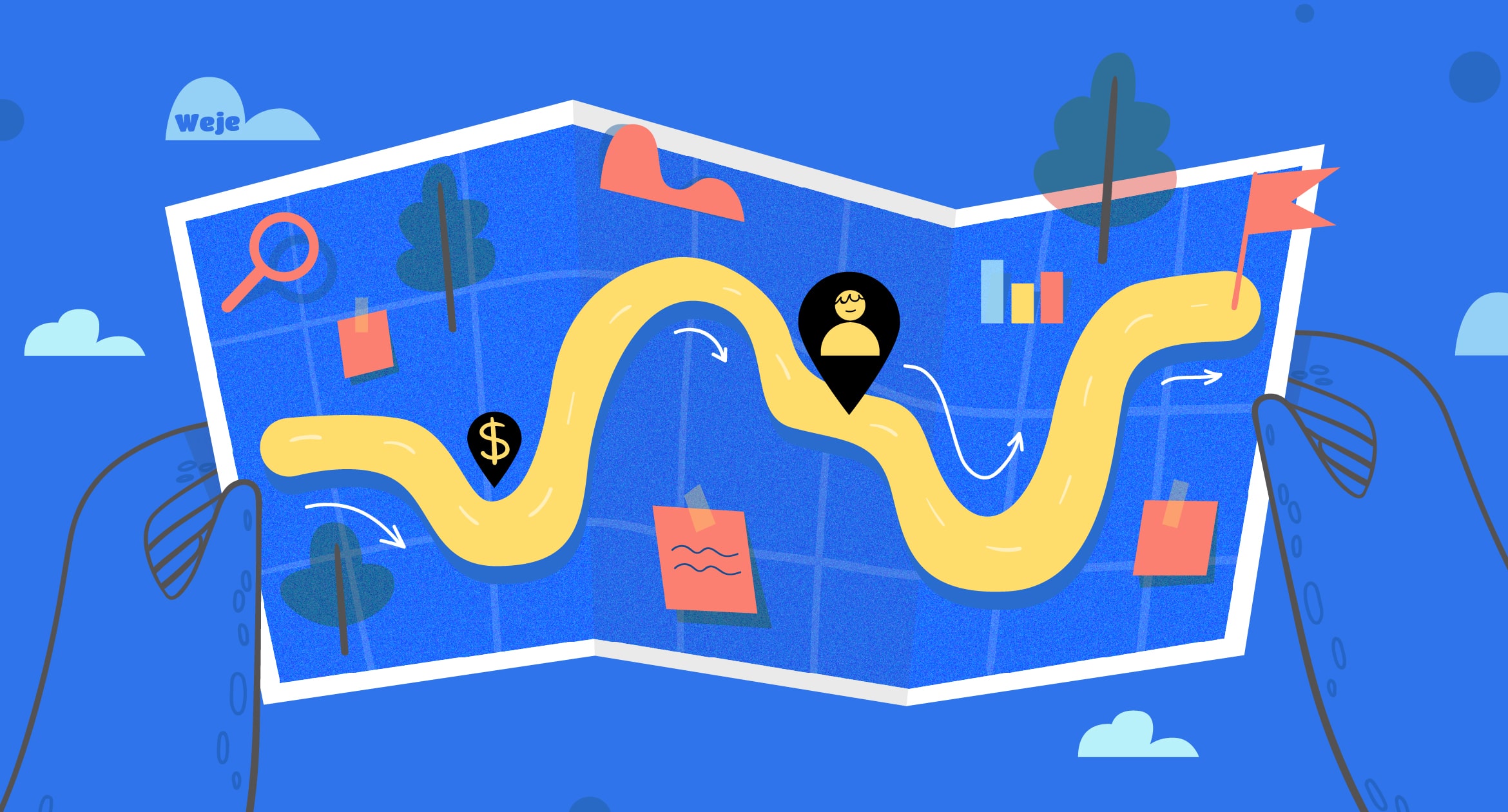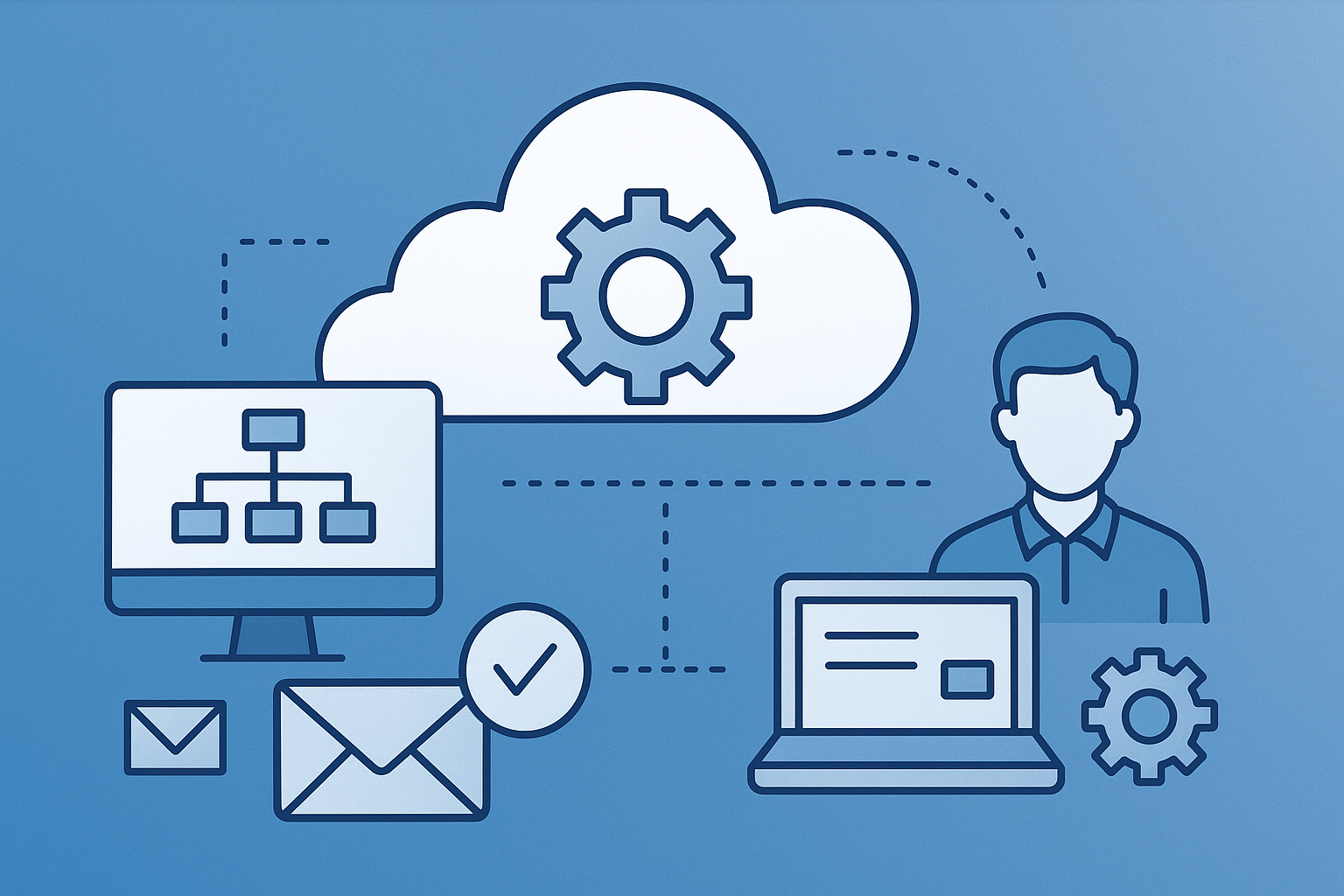Do you really know your customer? In most cases, it’s very difficult to define who your customer is, what his pain points are and why he chooses your business over the competition. Some would say understanding your customer is unnecessary.
You could just go with traditional marketing methods, after all. But if you’re aiming for strong brand loyalty or if you want to be a step ahead in your business decisions, you could really benefit from creating a customer journey map that will allow you to define your customers and their experience at every brand touchpoint. As a consequence, you will have fantastic ideas for marketing campaigns, trade marketing, events, social media advertisements, SEO optimization, and so on.
What is a customer journey map?
So, what is a customer journey map? It’s essentially a visual storyline that shows you a customer’s experience across different stages of his interaction with your brand.
This map offers a clear picture of how a customer perceives your business so you can nurture the things that you’re doing right. You can also correct those that you’re doing wrong and improve your process to give your customers the best experience throughout their life cycle.
When you create a customer journey map, you’re creating a layout of all the touchpoints that your customer has with your company.
It could be the time he saw you through a Facebook advertisement or a newsletter he received that led to an inquiry about your product. This storyline also points out the actions taken by the customer through each interaction.
What are the benefits of a customer journey map?
Learning how to design a customer journey map is essential for every business because it allows you to see a detailed description of your current processes and how customers are reacting to them. Thus, you can determine your common pain points and improve the experience that you’re giving to customers. But what exactly can a customer journey map bring to your business?
- It allows you to really understand your customer.
As a business, the only way to satisfy your customers is to understand what they need and how they feel about your brand. A lot of situations can pop up throughout the sales lifecycle and you need to be at the forefront of addressing them to make sure that your customers are treated well for them to stay loyal to your business.
Learning how to map customer journey gives you the opportunity to know your customers more and see your business from their perspective.
- It helps you improve your customer service.
You already know how important customer service standards are in your business, but you can only truly implement them with a clear customer journey map in mind.
By having concise examples, you can easily train your team members to follow the best practices when it comes to handling your customers properly.
- It guides you towards achieving your goals.
A customer journey map is a great tool to use for meetings and presentations because it shows a clear representation of your customer experience. For businesses that prioritize product led growth, understanding how customers interact with a product at different touchpoints is crucial for driving adoption and retention. This makes it easier to explain to your team your goals for your customers and even help your sales team understand what needs to be done to improve your customer onboarding processes.
This makes it easier to explain to your team your goals for your customers and even help your sales team what needs to be done to improve your customer onboarding processes.
- It allows you to see loopholes in your system.
Without a customer journey map, it would be hard to see which areas in your customer sales lifecycle you need to improve. But with one, you can easily see the gaps between devices, departments and channels so you can work on addressing those loopholes before they affect your brand further.
The important components of a customer journey map
Before you could create a customer journey map for your business, it’s very important to focus on these crucial elements that will allow you to map out your customer journey more effectively and use it to improve your business:
- Think from your customer’s perspective. The customer journey map isn’t about how your business perceives that experience, but it’s about how your customer goes through the sales lifecycle.
- Utilize tools. Once you’re able to create a simple outline for your map, use different tools such as customer analytics to make it more reflective of your customer experience.
- Consider customer segments. Acknowledge that there are different customer segments within your market and they have different experiences with your products and brand.
- Make sure that your map reflects every touchpoint. Your customer journey map should be as specific as possible when it comes to all the touchpoints through which your customer used in connecting with your brand. It could be through social media, advertisements, your website, an email or even a text. You need to put that into detail across your customer journey map.
How to create a customer journey map
There is no right or wrong way in learning how to map a customer journey. But these steps can help you design one that really fits your customer persona and allow you to use your customer journey map in the most efficient way possible.
- Define your customer persona.
A customer persona is simply a representation of your ideal customer based on market research. Creating a customer persona means describing that customer in detail including his age, interests, job and goals to give you and your team a clear picture of who you want to deal with.
A persona is one of the most important customer journey mapping tools because it’s your starting point for designing your customer journey map.
Although you can start with just one persona, some brands also create different maps for target customers or a group of customers to see how they interact with a brand throughout their journey.
- Map out your customer phases.
A customer journey map template is typically divided into phases or stages that the customer goes through in his journey. You need to remember that this customer journey map should be focused on your customer’s goals and not your own processes.
Think about all the steps that your customer experiences from discovering your product to buying it. A typical customer lifecycle consists of five basic stages: Reach, Acquisition, Conversion, Retention and Loyalty. But you can also expand these stages to be more specific about your customer lifecycle.
To make things easier in planning and mapping out your customer phases, you can use tools such as Weje, an online whiteboard that you and your team can use for brainstorming.
This new tool allows you to turn those ideas into representations so it’s easier for you to organize boards and share them with your team for convenient collaboration.
- Identify your customer’s touchpoints.
Once you have your phases organized, the next step is to identify all the touchpoints a customer has with your brand throughout these stages and incorporate them into your customer journey map.
You can look at a customer journey map example to guide you, but you always have the freedom to be creative in incorporating touchpoints with the phases of your customer lifecycle. For businesses looking to enhance how they capture and act on customer feedback throughout the journey, integrating specialized NPS software is increasingly common. Tools in this category allow brands not only to monitor satisfaction at key touchpoints but also provide actionable analytics for boosting loyalty and retention.
Make sure to include all interactions a customer has with you during each stage including your advertisements, newsletters and customer service.
- Boost your customer journey map with research.
Although you already have that idea for your customer persona based on user and market research, you can still boost that customer journey map further by doing research with the help of feedback from real customers using customer feedback solutions.
You have the option to offer incentives for those who participate, but some customers are just happy to give their feedback to improve their experience. In doing your research, make sure that you learn about a customer’s goals, expectations and his own stages and touchpoints throughout his journey.
You can use this data to make your customer journey map more catered towards your real customers, which will help you in creating strategies and making big decisions for your business down the line.
- Create solutions.
Part of learning how to use a customer journey map is creating solutions based on the pain points and loopholes that you identified throughout your customer’s journey. For example, if the map consistently shows customer frustration with response times or a lack of after-hours help, one of the most effective solutions could be to engage in customer support outsourcing. Partnering with a dedicated service can immediately resolve these pain points by providing 24/7 coverage and trained agents, turning a major source of friction into a seamless, positive experience. This is also a great opportunity for you to improve your processes as you see fit and boost your customer experience to promote brand loyalty.
A customer journey map shouldn’t only be a representation of your customer’s journey throughout the sales cycle, but it should also be a tool for you to use in improving your processes to drive more ROI.
The takeaway
Creating a customer journey map is a must if you want to understand your customers better and work on improving customer experience for your brand. After all, your customer is at the heart of your business and customer experience can spell the difference between success and failure for your brand.
Learn how to create a customer journey map today and add more value to your business.
Published: July 5, 2021




